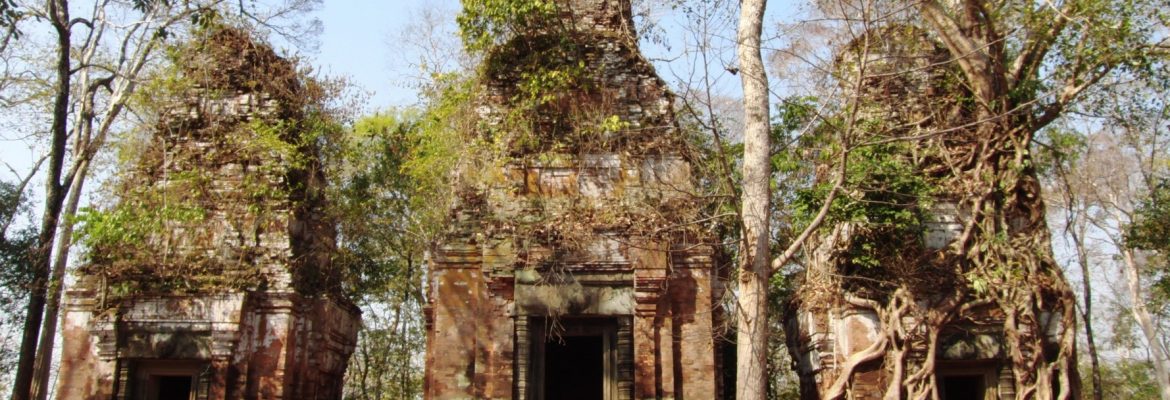Koh Ker, Cambodia
Abandoned to the forests of the north, Koh Ker (admission US$10), capital of the Angkorian empire from AD 928 to AD 944, was long one of Cambodia’s most remote and inaccessible temple complexes. However, this has now changed thanks to recent de-mining and the opening of a new toll road from Dam Dek (via Beng Mealea) that puts Koh Ker (pronounced kah-kei) within day-trip distance of Siem Reap. But to really appreciate the temples – the area has 42 major structures in an area that measures 9km by 4km – it’s necessary to spend the night.
Several of the most impressive pieces in the National Museum in Phnom Penh come from Koh Ker, including the huge garuda (mythical half-man, half-bird creature) that greets visitors in the
entrance hall and a unique carving depicting a pair of wrestling monkey-kings.
Most visitors start at Prasat Krahom (Red Temple), the second-largest structure at Koh Ker, which is named for the red bricks from which it is constructed. Sadly, none of the carved lions for which this temple was once known remain, though there’s still plenty to see – stone archways and galleries lean hither and thither and impressive stone carvings grace lintels, doorposts and slender window columns. A naga-flanked causeway and series of sanctuaries, libraries and gates lead past trees and vegetation-covered ponds. Just west of Prasat Krahom, at the far end of a half-fallen colonnade, are the remains of an impressive statue of Nandin.
The principal monument at Koh Ker is Prasat Thom (Prasat Kompeng), a 55m-wide, 40m-high sandstone-faced pyramid with seven tiers that’s just west of Prasat Krahom. This striking structure, which looks like it could almost be a Mayan site somewhere on the Yucatan Peninsula, offers some spectacular views across the forest from its summit. Look out for the giant garuda under the collapsed chamber at the top of the vertigo-inducing stairs. Some 40 inscriptions, dating from 932 to 1010, have been found at Prasat Thom.
South of this central group is a 1185m-by-548m baray (reservoir) known as the Rahal. It is fed by Stung Sen, which supplied water to irrigate the land in this arid area.
Some of the largest Shiva linga (phallic symbols) in Cambodia can still be seen in four temples about 1km northeast of Prasat Thom. The largest is in Prasat Thneng, and Prasat Leung (Prasat Balang) is similarly well endowed.
Other interesting temples: Prasat Bram (Prasat Pram), the first you come to after passing the toll booths (it’ll be on your left), which is named in honour of its five towers, two of which are smothered by strangler figs; Prasat Neang Khmau (Prasat Nean Khmau), a bit further north and on your right, with some fine lintels decorating its otherwise bland exterior; and Prasat Chen (Prasat Chhin), about halfway from the toll booths to Prasat Krahom, where the statue of the wrestling monkeys was discovered.
Koh Ker is one of the least-studied temple areas from the Angkorian period. Louis Delaporte visited in 1880 during his extensive investigations into Angkorian temples. It was surveyed in 1921 by the great Henri Parmentier for an article in the Bulletin de l’École d’Extrême Orient, but no restoration work was ever undertaken here. Archaeological surveys were carried out by Cambodian teams in the 1950s and 1960s, but all records vanished during the destruction of the 1970s, helping to preserve this complex as something of an enigma.


